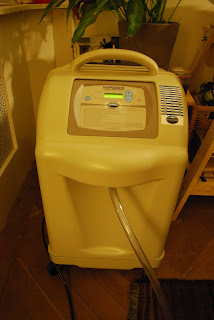
I resist the urge to lower my voice and mumble 'Luke <insert shallow breathing sound here>, I am your father...' through the mask.
As the anxiety ebbs away and I regain control of my imagination, my first five-minute hypoxic session passes without incident. As soon as I take the mask off and began to breathe normal room air the reading on my pulse oximeter indicates my oxygen saturation levels have returned back to its base line score of 99%.
Intermittent Hypoxic Training has been proven that hypoxic training (5-minute sessions of inhaling air that has been filtered to reduce its oxygen content) significantly improves oxygen metabolism in the body and stimulates the body’s defence mechanisms with beneficial responses in our physiology. The remarkable claims made in favour IHT treatment include helping with weight loss, sleeplessness, migraines and asthma attacks. Many top-level athletes in endurance sports such as the Tour du France train at simulated altitude. The Altitude Centre in London from whom I have rented my Hypoxic Tent and IHT equipment are especially busy at the moment with Olympic athletes.
The normal level of oxygen in air at sea level is 21 per cent and during a 'hypoxic session' it is taken steadily down to 9 per cent, the equivalent of the air you would breathe at 21,500 feet / 6400m. If you can be more efficient with your breathing, it takes a load off your body.
Your body’s response to the lack of oxygen is that it stimulates the production of red blood cells, giving the blood better oxygen-carrying capacity and lowering the heart-rate. It takes the body more than two weeks to produce new red-blood cells, so in order for intermittent hypoxic training to be effective, treatment involves daily hour-long sessions spread over a 21-day period.
The strategy is that with this ‘pre-acclimatisaton’, my initial few weeks on Cho Oyu will, from an acclimatization perspective, be more comfortable as I will be ‘pre-acclimatised’ to the lack of oxygen at altitude. This will leave my body to focus more on getting stronger rather than needing time for the production of increased red blood cells.
 |
| Hypoxicator (size of a small beer fridge) |













0 comments:
Post a Comment